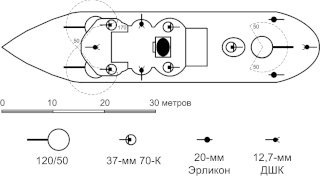 W
WThe Russian Revolution of 1905, also known as the First Russian Revolution, was a wave of mass political and social unrest that spread through vast areas of the Russian Empire, some of which was directed at the government. It included worker strikes, peasant unrest, and military mutinies. It led to constitutional reform, including the establishment of the State Duma, the multi-party system, and the Russian Constitution of 1906.
 W
WThe Action off Măcin was a naval engagement between a torpedo boat of the Romanian Navy with a mixed Romanian-Russian crew and a monitor of the Ottoman Navy which took place during the 1877-1878 Russo-Turkish War. It was the first time in history that a torpedo craft sank its target without being sunk itself.
 W
WThe Danube Delta Campaign was a series of naval engagements between the Soviet Danube Flotilla and its Romanian counterpart in late June 1941, during the first days of Operation Barbarossa.
 W
WThe Flămânda Offensive, which took place during World War I between 29 September and 5 October 1916, was an offensive across the Danube mounted by the Romanian 3rd Army supported by Romanian coastal artillery. Named after the hamlet of Flămânda, the battle represented a consistent effort by the Romanian Army to stop the Central Powers' southern offensive led by August von Mackensen. The battle ended as a tactical victory for the Central Powers.
 W
WThe Raid on Ruse was the first naval action to take place on the Romanian front during World War I. It took place on the first day of the campaign, 27 August 1916, just as Romanian troops were crossing the border into Transylvania, then part of Austria-Hungary.
 W
WThe Romanian landings in Bulgaria were a decisive military action during the Second Balkan War. As Bulgaria was fighting both Greece and Serbia at that time, the Romanian invasion made the situation untenable for the Bulgarians, who were forced to ask for peace some two weeks later.
 W
WThe Romanian military intervention in Bessarabia took place between 19 January and 8 March 1918, as part of the broader Allied intervention in the Russian Civil War. It pitted the Kingdom of Romania, Russian Republic, Ukrainian People's Republic and anti-Bolshevik factions of the Moldavian Democratic Republic on one side, against the Bolshevik controlled Rumcherod and Odessa Soviet Republic, as well as pro-Bolshevik factions within the Moldavian DR. The intervention began when the Romanian army and its allies crossed into Bessarabia and launched an attack on Chișinău and Ungheni, capturing the latter.
 W
WThe Romanian War of Independence is the name used in Romanian historiography to refer to the Russo-Turkish War (1877–78), following which Romania, fighting on the Russian side, gained independence from the Ottoman Empire. On April 16 [O.S. April 4] 1877, Romania and the Russian Empire signed a treaty at Bucharest under which Russian troops were allowed to pass through Romanian territory, with the condition that Russia respected the integrity of Romania. Consequently, the mobilization of the Romanian troops also began, and about 120,000 soldiers were massed in the south of the country to defend against an eventual attack of the Ottoman forces from south of the Danube. On April 24 [O.S. April 12] 1877, Russia declared war on the Ottoman Empire and its troops entered Romania through the newly built Eiffel Bridge, on their way to the Ottoman Empire. Due to great losses, the Russian Empire asked Romania to intervene. On July 24 [O.S. July 12] 1877, the first Romanian Army units crossed the Danube and joined forces with the Russian Army.
 W
WThe Tatarbunary uprising was a Bolshevik-inspired peasant revolt that took place on 15–18 September 1924, in and around the town of Tatarbunary in Budjak (Bessarabia), then part of Romania, now part of Odessa Oblast, Ukraine. It was led by a pro-Soviet revolutionary committee which called for the creation of a Moldavian Soviet Republic and an end to "Romanian occupation".
 W
WThe Battle of Turtucaia, also known as Tutrakan Epopee in Bulgaria, was the opening battle of the first Central Powers offensive during the Romanian Campaign of World War I. The battle lasted for five days and ended with the capture of the fortress of Turtucaia and the surrender of its Romanian defenders.
 W
WThe U-boat Campaign from 1914 to 1918 was the World War I naval campaign fought by German U-boats against the trade routes of the Allies. It took place largely in the seas around the British Isles and in the Mediterranean. The German Empire relied on imports for food and domestic food production and the United Kingdom relied heavily on imports to feed its population, and both required raw materials to supply their war industry; the powers aimed, therefore, to blockade one another. The British had the Royal Navy which was superior in numbers and could operate on most of the world's oceans because of the British Empire, whereas the Imperial German Navy surface fleet was mainly restricted to the German Bight, and used commerce raiders and unrestricted submarine warfare to operate elsewhere.
 W
WThe Kingdom of Romania was neutral for the first two years of World War I, entering on the side of the Allied powers from 27 August 1916 until Central Power occupation led to the Treaty of Bucharest in May 1918, before reentering the war on 10 November 1918. It had the most significant oil fields in Europe, and Germany eagerly bought its petroleum, as well as food exports.